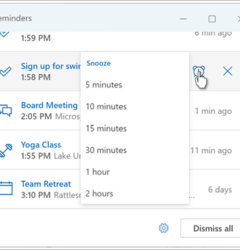- Email: [email protected]
- phone: +44 (0) 203 916 5117
17 Feb

No-shows and last-minute cancellations can significantly impact businesses, causing lost time, reduced productivity, and potential revenue losses. Whether you're organizing a client meeting, a high-stakes conference, or a webinar, ensuring maximum attendance is crucial.
One of the most effective ways to minimize no-shows is by using calendar invites. These ensure that meetings are seamlessly added to attendees' schedules, complete with automated reminders and relevant details.
In this blog, we’ll explore how businesses can leverage calendar invites to reduce no-shows and how Let's Calendar (www.letscalendar.com) can help you schedule and send bulk calendar invites for meetings at scale—efficiently, discreetly, and with personalized details to enhance attendee engagement.
1. Why No-Shows Happen in Client Meetings
Understanding the root causes of no-shows is the first step to preventing them. Here are some common reasons:
- Lack of Reminders: Many attendees simply forget about scheduled meetings.
- Scheduling Conflicts: Double-booking or miscommunication about the meeting time can lead to no-shows.
- Lost Meeting Details: Emails with meeting links often get buried in inboxes, making it hard for attendees to find them when needed.
- Time Zone Confusion: For international meetings, incorrect time zone conversions cause participants to miss scheduled times.
2. The Power of Calendar Invites in Reducing No-Shows
Calendar invites offer a structured and efficient way to ensure attendees are reminded and prepared for meetings. Here’s how they help:
- Automatic Addition to Calendars: Ensures the meeting appears in the invitee’s calendar without manual input.
- Key Meeting Details in One Place: Time, location, links, agenda, and other crucial information are included.
- Automated Reminders: Alerts are triggered before the meeting, reducing forgetfulness.
- Easy Rescheduling Options: Helps attendees quickly adjust meeting times if needed instead of skipping them altogether.
3. How to Use Calendar Invites Effectively
a) Personalizing Invites for Better Engagement
A generic meeting invite may not capture attention. Instead, personalize invites with:
- The recipient’s name and a short personalized message.
- A concise but clear agenda to highlight the importance of the meeting.
- Relevant meeting details, including customized links and additional context.
b) Automating Bulk Calendar Invites for Meetings
Manually sending meeting invites to multiple attendees is inefficient. Instead, automate the process using Let's Calendar:
- Send mass calendar invites for meetings without manual effort.
- Ensure each recipient gets a personalized invite without revealing other invitees.
- Get real-time responses to track attendance easily.
c) Ensuring Cross-Platform Compatibility
Your invitees may use different calendar platforms. Ensure seamless integration by providing direct add-to-calendar links for:
- Google Calendar
- Outlook
- Apple Calendar
With Let's Calendar, you can send invites that work seamlessly across all platforms, ensuring higher attendance rates.
4. Using Let's Calendar to Streamline Your Scheduling Process
a) Discreet and Scalable Sending
- Send bulk calendar invites 1:1, ensuring privacy while managing large-scale events or meetings.
- Ideal for high-profile meetings, client engagements, or corporate webinars.
b) Personalized Calendar Invites
- Tailor each invite with custom details like meeting purpose, attendee name, and time zones.
- Add a personalized touch to improve engagement and attendance.
c) Automated Follow-ups and RSVP Tracking
- Get real-time updates on who has accepted or declined the invite.
- Automate follow-up reminders to reduce no-shows.
d) Seamless Integration with Popular Calendars
- Let's Calendar ensures your invites work with Google Calendar, Outlook, and Apple Calendar without hassle.
- Attendees can easily add a calendar to the event with a single click.
5. Best Practices for Reducing No-Shows with Calendar Invites
To further enhance the effectiveness of calendar invites, follow these best practices:
a) Send Invites Well in Advance
- Ensure recipients have enough time to plan and block their calendars.
b) Include All Key Details
- Meeting time, location, agenda, and alternate contact information should be clearly stated.
c) Make Rescheduling Easy
- Provide a seamless way for invitees to request a different time rather than skipping the meeting.
d) Track Attendance and Follow Up
- Use Let's Calendar to monitor RSVPs and send gentle reminders to no-show attendees for rescheduling.
Conclusion
Reducing no-shows for client meetings is critical for business success. Calendar invites help by ensuring meetings are well-organized, easily accessible, and properly scheduled with automated reminders.
By using Let's Calendar (www.letscalendar.com), businesses can send bulk calendar invites for meetings, personalize invites, automate follow-ups, and integrate seamlessly with major calendar platforms.
Take control of your meeting attendance today—start using Let's Calendar to optimize scheduling and minimize no-shows effortlessly!









Recent Comments